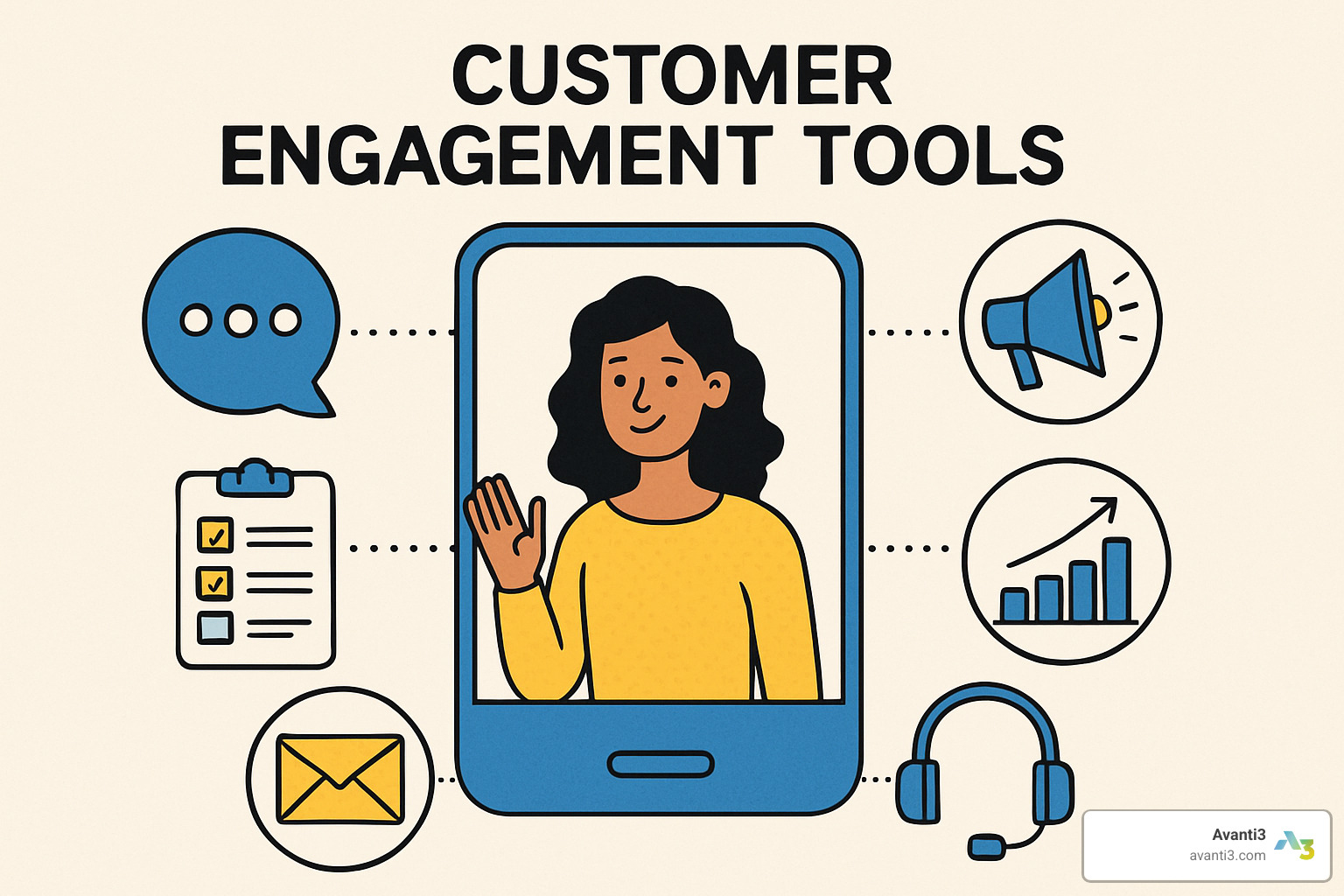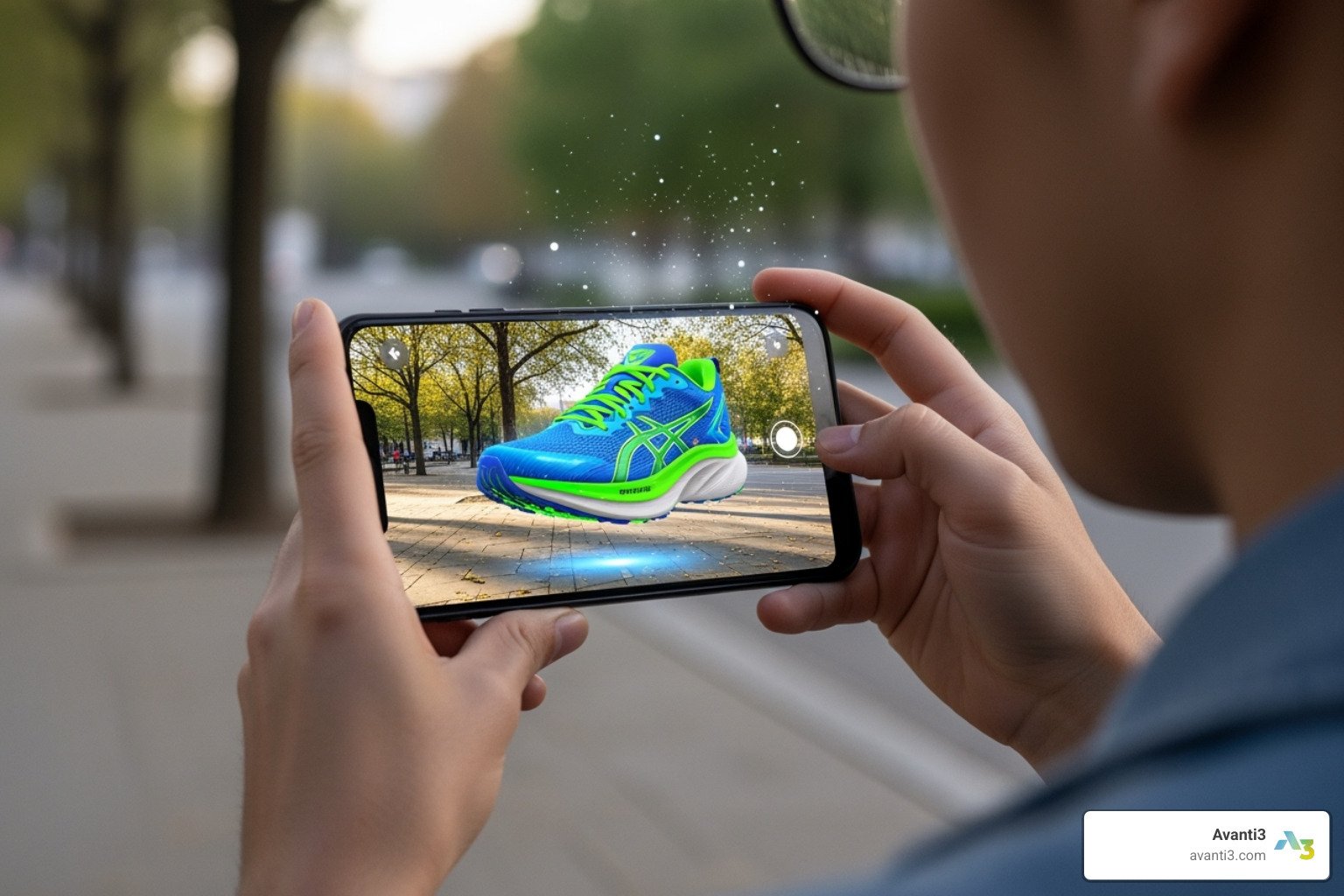Customer engagement tools: 10 Powerful Ways for Success 2025
Why Customer Engagement Tools Are Your Business Lifeline
Customer engagement tools are software solutions that help businesses manage, personalize, and optimize interactions with customers across multiple channels throughout their entire journey. These platforms combine messaging, analytics, automation, and AI to create meaningful connections that drive loyalty and revenue.
Quick Answer for Customer Engagement Tools:
– Live chat & messaging – Real-time support and sales conversations
– Email & SMS automation – Personalized campaigns and sequences
– Feedback & survey platforms – Voice of customer insights
– Loyalty & rewards systems – Gamified retention programs
– Analytics dashboards – Performance tracking and journey mapping
– Knowledge bases – Self-service support portals
– Community platforms – Forums and advocacy programs
– Web3 engagement – NFT memberships and blockchain rewards
The average person wades through 98 business emails daily, making it incredibly tough for brands to stand out. Companies with robust omnichannel customer engagement retain 89% of their customers, compared to just 33% for those without it.
AI-powered personalization, Web3 rewards, and blockchain experiences are creating entirely new ways to build authentic relationships. The brands winning today aren’t just responding to customers – they’re predicting needs, creating communities, and offering exclusive digital experiences.
I’m Samir ElKamouny AV, and I’ve spent years helping businesses transform their customer relationships through innovative engagement strategies and cutting-edge technology platforms.
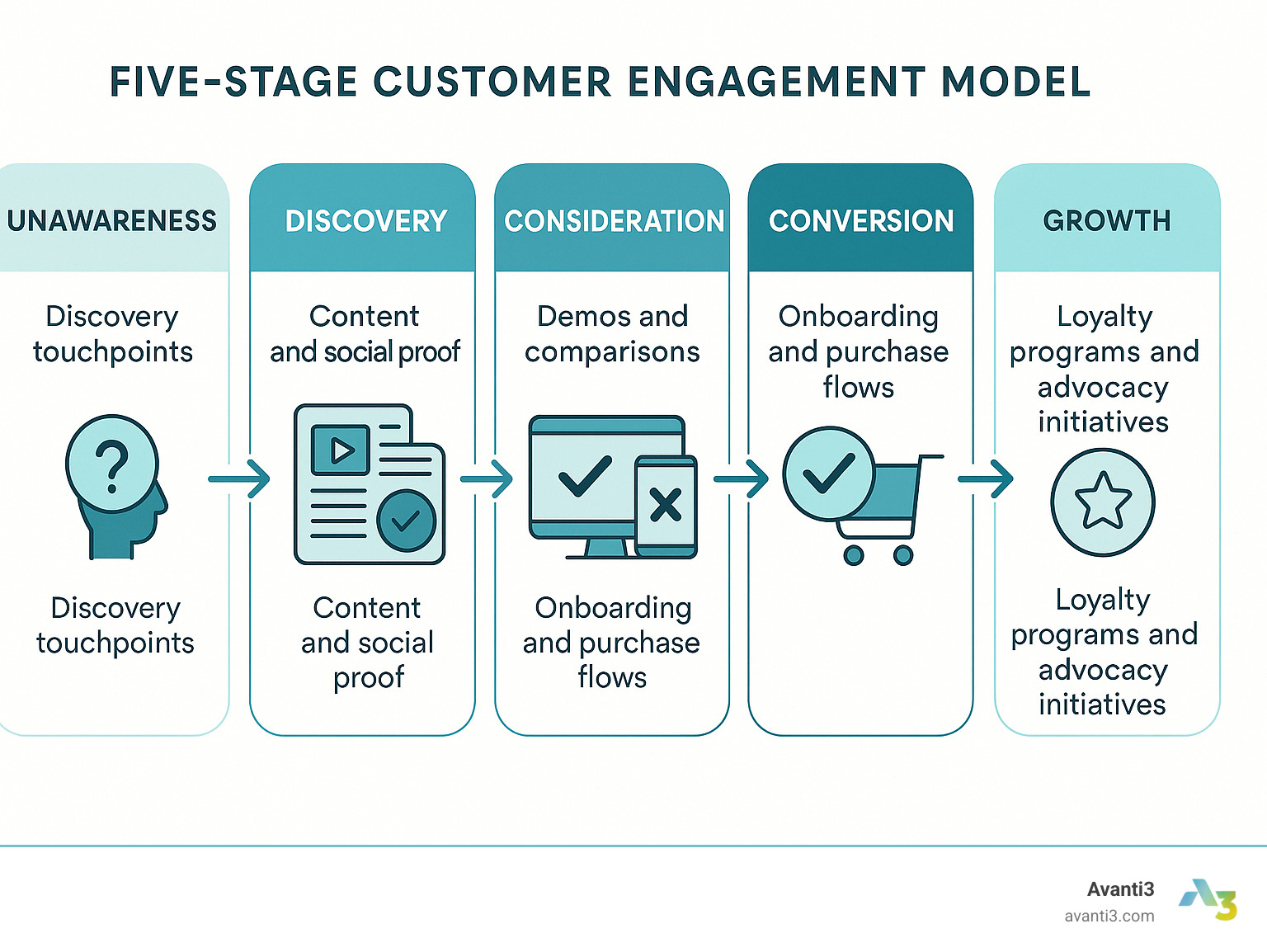
Basic customer engagement tools glossary:
– AI digital tools
– digital engagement for sales cloud
– digital engagement service cloud
Understanding Customer Engagement Tools
Customer engagement tools bridge interaction gaps by creating a unified view of every customer interaction. They’re the difference between treating customers like strangers at every touchpoint versus recognizing them as valued individuals with unique preferences and histories.
These platforms collect customer data from websites, apps, social channels, and other touchpoints, then weave this information together to build complete customer profiles. The real power comes from using this unified data to deliver personalized experiences automatically.
Modern customer engagement tools provide real-time data processing and a single source of truth for customer information. This means your support team sees the same customer history as your sales team.
What Is a Customer Engagement Platform?
A customer engagement platform acts as the central hub that connects all your customer touchpoints into one intelligent system. Instead of managing separate tools for email, chat, social media, and support, everything flows through a unified dashboard.
These platforms act as both a personalization engine and an orchestration system. They capture every customer interaction, then use this comprehensive view to deliver contextually relevant experiences at exactly the right moment.
The magic happens through automated lifecycle touchpoints. When someone abandons their shopping cart, the platform triggers a personalized sequence that includes SMS reminders, targeted social content, and special offers based on their browsing history.
CRM vs Customer Engagement Tools
A CRM system is like a sophisticated filing cabinet – it stores customer information and tracks sales pipelines. But it’s essentially passive, waiting for someone to access the data.
Customer engagement tools take that data and bring it to life. While your CRM focuses on data storage, engagement platforms excel at interaction orchestration. They don’t just know Sarah visited your pricing page – they automatically send her a personalized guide and schedule follow-up.
The two systems play complementary roles. Your CRM provides foundational customer data, while engagement tools activate that information through personalized communications across every channel.
Why They Matter in 2025
The competitive landscape has become fierce. Every business fights for attention in those 98 daily emails flooding customers’ inboxes. Standing out requires exceptional, personalized experiences.
Customer expectations have evolved dramatically. They want brands to remember preferences across channels, anticipate needs, and provide instant support. Companies with robust omnichannel customer engagement retain 89% of their customers, compared to just 33% for those without it.
Brand loyalty now depends on emotional connections built through consistent, personalized interactions. The brands winning in 2025 create experiences that make customers feel like insiders, not just buyers.
10 Essential Types of Customer Engagement Tools for 2025
Building meaningful customer relationships in 2025 requires a complete toolbox of customer engagement tools that work together seamlessly. AI, analytics, and personalization have become the foundation, while Web3 capabilities are opening doors to reward systems and community experiences.
Omnichannel Inbox & Messaging
An omnichannel inbox brings together every customer message – email, SMS, social media, live chat, or voice calls – into one clear view. Intelligent routing knows which team member has the right skills and who’s available to help.
Automation workflows handle routine tasks automatically. SMS campaigns achieve up to 98% open rates and drive 7.5 times more replies than email, making text messaging crucial for your omnichannel approach.
Live Chat Customer Engagement Tools
Today’s chat tools blend human agents with AI-powered chatbots to create support experiences that feel both instant and genuinely helpful. AI copilots work alongside human team members, suggesting responses and pulling up relevant customer history.
Proactive chat prompts triggered by specific behaviors can achieve 25% increases in average order value by recommending complementary products during the buying process.
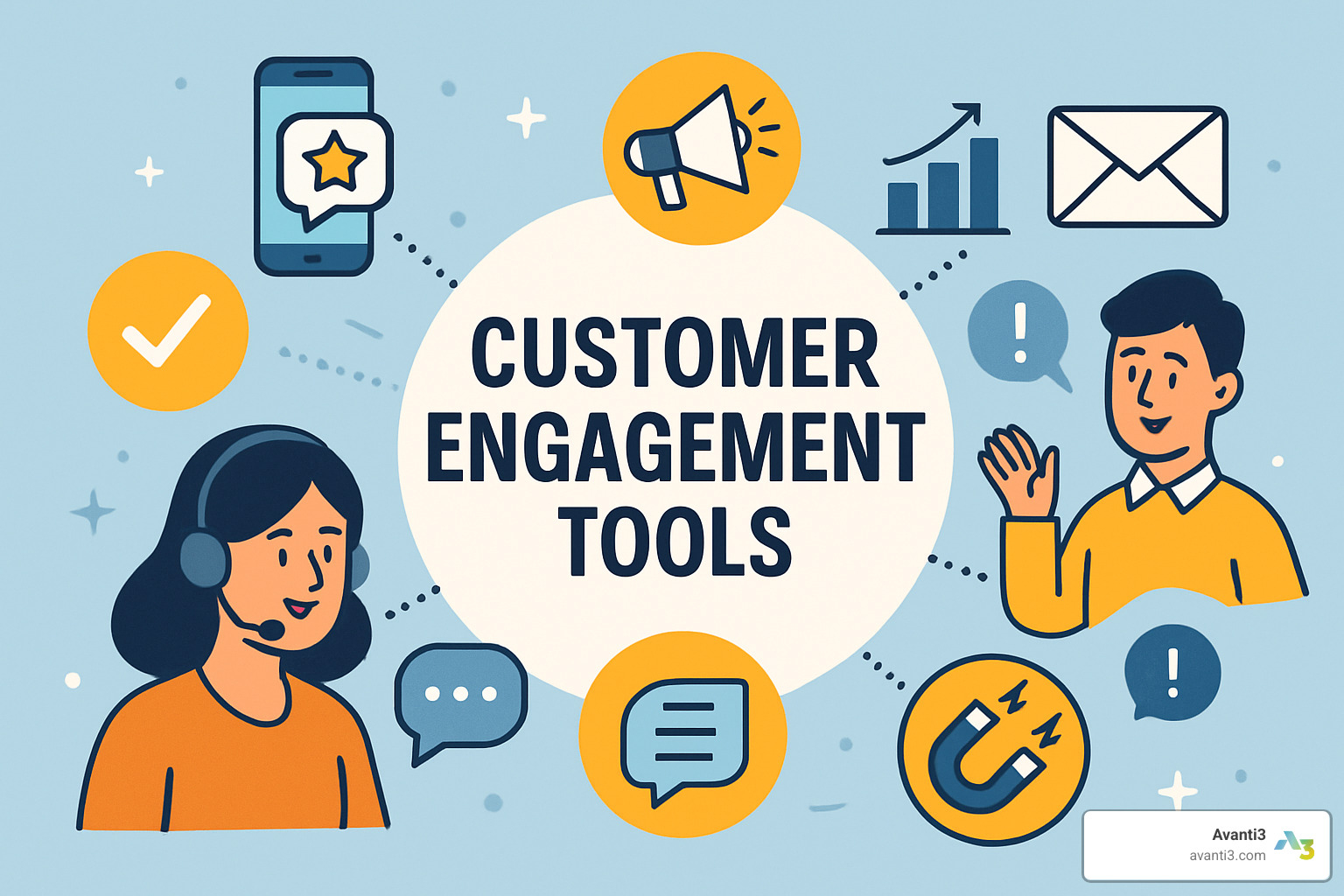
Feedback & Survey Customer Engagement Tools
Modern feedback tools create conversational, AI-powered surveys that adapt questions based on responses. This approach captures up to 3.5 times more data than traditional forms.
Real-time feedback collection enables immediate responses to customer concerns. When someone submits negative feedback, automated workflows instantly alert team members and trigger personalized follow-up messages.
Loyalty & Gamified Rewards
Traditional point-collecting programs are being replaced by sophisticated gamification systems that create genuine emotional connections. Customers complete missions, open up achievement levels, and gain access to exclusive experiences.
Web3 integration opens entirely new possibilities. Blockchain-based tokens and NFT memberships create verifiable, tradeable rewards that customers truly own, open uping exclusive experiences or even appreciating in value.
Personalization & Recommendation Engines
AI-powered personalization engines analyze customer behavior patterns to predict preferences and deliver individually customized experiences. Behavioral segmentation groups customers by actual actions, interests, and lifecycle stage.
A/B testing capabilities allow continuous optimization while predictive analytics identify customers likely to churn, enabling proactive retention campaigns.
Knowledge Base & Self-Service Portals
Modern knowledge bases use AI-powered search to understand customer intent and surface relevant information instantly. Smart search engines interpret natural language queries and suggest related topics.
Integration with live chat creates seamless escalation paths when customers can’t find what they need in self-service resources.
Community-Building Platforms
Customer communities create spaces where peer-to-peer support, product feedback, and brand advocacy naturally flourish. Gamification elements like reputation systems and badges encourage active participation.
Tools for Building Online Communities
Web3 Customer Engagement Tools
Web3 technologies are revolutionizing customer engagement by creating new forms of ownership, community, and value exchange. NFT memberships provide verifiable digital identity and exclusive access.
Blockchain transparency allows customers to see exactly how their data is used and participate in governance decisions. Zero-friction wallet integration makes Web3 experiences accessible to mainstream consumers.
At Avanti3, we specialize in making Web3 engagement invisible to end users while delivering powerful new capabilities for brands. Our platform enables NFT rewards, blockchain-verified achievements, and AR/VR experiences.
Analytics & Journey Orchestration Dashboards
Comprehensive analytics platforms provide real-time visibility into customer behavior, campaign performance, and engagement trends. Journey orchestration tools visualize the complete customer path, identifying bottlenecks and opportunities.
Sentiment analysis across all touchpoints provides early warning systems for potential issues and identifies satisfied customers for advocacy opportunities.
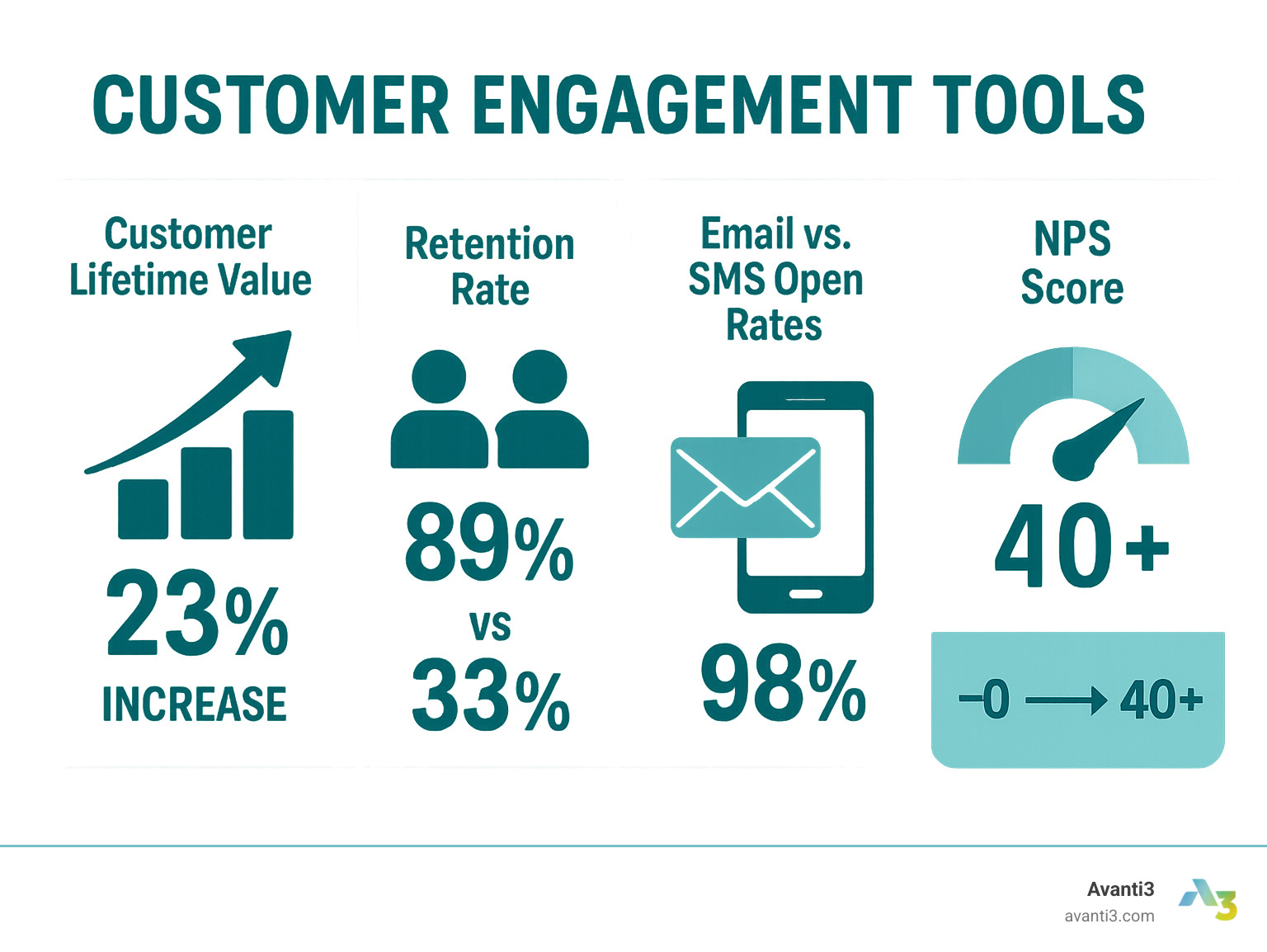
| Metric | Goal | Typical Range |
|---|---|---|
| Customer Lifetime Value | 23% increase | $500-$5000 |
| Retention Rate | 89% (omnichannel) | 33-89% |
| Email Open Rate | 25-35% | 15-45% |
| SMS Open Rate | 90-98% | 85-99% |
| NPS Score | 40+ | -100 to +100 |
| Response Time | <1 hour | 1-24 hours |
Voice & Video Engagement
Interactive voice response (IVR) systems powered by AI understand natural language instead of forcing customers through endless menu options. Video chat capabilities enable face-to-face support that builds stronger relationships.
Voice analytics extract insights from call recordings to identify common issues and training opportunities, turning every conversation into a learning opportunity.
Key Features & Capabilities to Look For
Choosing the right customer engagement tools requires focusing on essential capabilities that separate transformative platforms from the crowd.
Omnichannel routing should be your first priority. When someone starts a chat on your website and continues via email, they expect you to remember the entire context. The best platforms create unified customer profiles that track every interaction across every touchpoint.
AI chatbots have evolved from frustrating “I didn’t understand” responses to knowledgeable assistants. Modern AI learns from real conversations and gets smarter over time, handling routine tasks so your team can focus on building relationships.
Automation workflows create those “wow, how did they know?” moments. Drag-and-drop builders with pre-made templates let your marketing team create sophisticated campaigns that respond to customer behavior in real-time.
Personalization tokens go beyond inserting first names. Dynamic content changes based on purchase history, engagement patterns, and activity timing, making every interaction feel custom-crafted.
Real-time analytics provide insights to continuously improve customer relationships. Your dashboard should tell you not just what happened, but why it happened and what you should do next.
Security and compliance are critical when handling customer data across multiple channels. Look for encryption, granular access controls, and built-in compliance with GDPR and CCPA regulations.
Scalability ensures your platform grows with your success. Cloud-based solutions handle everything from your first hundred customers to your first million without expensive migrations.
Integrations determine how well your engagement platform works with existing tools. Open APIs and pre-built connectors eliminate data silos that make customer service feel disconnected.
The platforms winning in 2025 also accept emerging technologies like Web3 rewards and blockchain transparency – features becoming table stakes for brands wanting genuine community and lasting loyalty.
Best Practices for Choosing and Implementing Customer Engagement Tools
Choosing the right customer engagement tools starts with crystal-clear goals tied directly to business outcomes. Are you boosting retention rates, increasing conversions, slashing support costs, or building brand community? Different platforms excel in different areas.
Get stakeholder buy-in from sales, marketing, customer success, and IT during evaluation. Each team brings unique perspectives that influence which platform works best. Create a scoring system that weights features based on what matters most to your situation.
Sandbox testing reveals how platforms actually perform with your real data and workflows. Many tools look impressive during demos but show limitations when implementing specific use cases. Take advantage of free trials to test thoroughly.
Most successful implementations follow a phased rollout approach. Start with core functionality like unified messaging or basic automation. Once your team feels comfortable and sees early wins, gradually layer in advanced features.
Change management often determines whether new tools succeed or collect digital dust. People resist new systems when uncertain about how changes affect their work. Provide comprehensive training and establish clear collaboration processes.
Watch for common pitfalls: Data migration complexity gets underestimated frequently. Failing to establish clear ownership creates confusion. Many organizations try replicating existing processes instead of optimizing for new platform capabilities.
ROI measurement needs upfront planning. Establish baseline metrics for response times, conversion rates, and satisfaction scores. Define clear success criteria to demonstrate platform impact.
Companies with robust omnichannel strategies retain 89% of customers versus 33% without integrated engagement approaches.
Customer engagement statistics
Future Trends Shaping Customer Engagement Tools
The world of customer engagement tools is evolving rapidly, with changes that will completely reshape how brands connect with customers. These aren’t incremental improvements – they’re fundamental shifts separating leaders from laggards.
Generative AI is changing how businesses create personalized content at scale. Instead of spending hours crafting individual campaigns, AI generates on-brand copy matching your unique voice and style. The technology learns from existing content, understanding tone and messaging preferences to create authentically human materials.
These AI systems adapt content for different customer segments automatically. A single product announcement becomes dozens of personalized messages, each custom to specific customer interests and communication preferences.
Predictive customer experience anticipates customer needs before they’re expressed. Machine learning systems analyze behavior patterns to identify who’s likely to churn, predict optimal message timing, and suggest products customers didn’t know they wanted.
Imagine knowing a customer will cancel their subscription three weeks before they decide. Predictive systems spot early warning signs and trigger personalized retention campaigns addressing specific concerns before they become deal-breakers.
Privacy-first design principles are becoming standard as consumers demand more control over personal data. Successful platforms implement zero-party data collection strategies that transparently ask customers for information in exchange for genuinely valuable personalized experiences.
AR and VR technologies create immersive retail experiences blurring digital and physical engagement lines. Customers virtually try on clothing, test drive cars, or walk through properties from their living rooms. These aren’t novelties anymore – they’re essential tools for complex or high-consideration products.
Invisible Web3 layers make blockchain benefits accessible to mainstream consumers without technical complexity. Customers earn, trade, and use digital rewards seamlessly while brands gain unprecedented transparency and community ownership capabilities.
At Avanti3, we’ve seen how properly implemented Web3 features transform customer relationships. NFT memberships create verifiable exclusivity traditional programs can’t match. The key is making powerful technologies completely invisible while delivering tangible value.
Sustainability features are becoming essential as customers choose brands aligning with their values. Modern platforms track environmental impact of digital communications and enable cause-based campaigns resonating with socially conscious consumers.
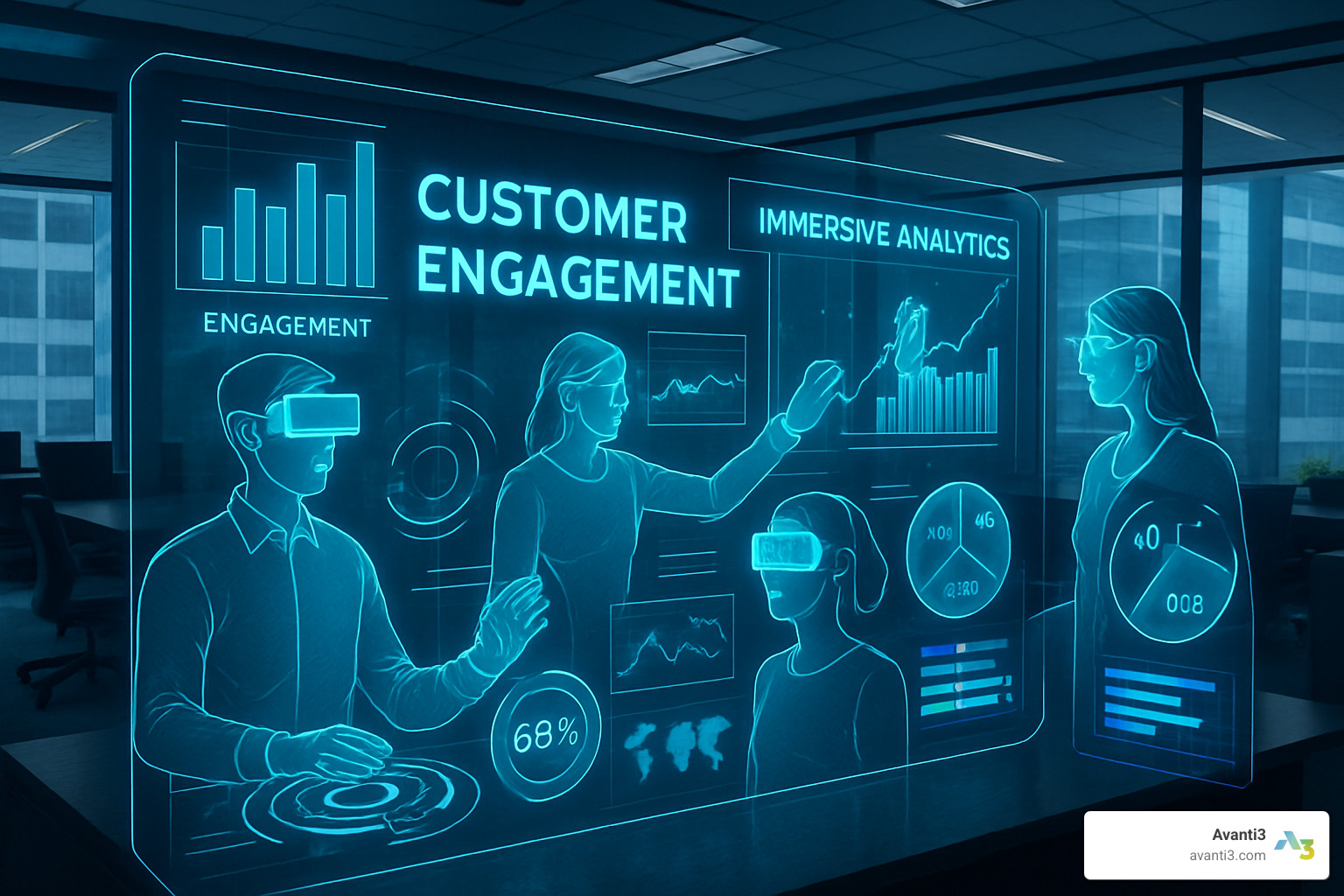
Frequently Asked Questions about Customer Engagement Tools
How do customer engagement tools improve customer satisfaction?
The magic of customer engagement tools lies in changing frustrating experiences into smooth, personalized journeys. These tools eliminate the headache of repeating your story to multiple agents.
When customers reach out, the platform already knows their purchase history, previous conversations, and preferences. Agents can jump straight into solving problems instead of playing twenty questions.
Real-time support capabilities mean customers get help exactly when needed. No more waiting days for email responses about simple questions. Many platforms spot potential issues before customers notice them.
Personalization makes every interaction genuinely relevant. Instead of generic communications, people receive messages matching their interests and buying patterns. When someone gets perfectly fitting product recommendations, they feel understood rather than marketed to.
Self-service options deserve mention because many customers prefer solving things themselves. Well-organized knowledge bases often provide faster answers than traditional support channels, available 24/7.
What KPIs should I track to measure effectiveness?
Measuring customer engagement tools success requires looking at both human and business sides. The most telling metrics often come from asking customers how they feel about their experiences.
Net Promoter Score (NPS) reveals whether customers would recommend you to friends. Customer Satisfaction Score (CSAT) and Customer Effort Score (CES) measure immediate satisfaction and ease of working with you.
Engagement metrics show whether communications hit the mark. Email open rates, click-through rates, and social interactions tell you if customers find your content valuable. Community participation reveals whether people see your brand as worth engaging with beyond transactions.
Operational metrics focus on whether tools make your team more effective. Average response time, first-contact resolution rates, and agent productivity indicate if platforms deliver on streamlining promises.
Business impact metrics connect activity to revenue outcomes. Customer lifetime value growth, retention improvements, and successful upselling show whether better engagement translates to better business results.
What is the biggest challenge when implementing new engagement software?
The biggest hurdle isn’t technical complexity – it’s getting your team to accept change. People naturally resist new tools, especially when they’ve developed comfortable routines with existing systems, even inefficient ones.
I’ve seen teams continue using spreadsheets after implementing sophisticated customer engagement tools simply because change feels overwhelming. The key is acknowledging resistance upfront and addressing it with patience and proper support.
Data migration complexity runs close second. Customer information is scattered across multiple systems. Consolidating data without losing details or creating duplicates requires careful planning and more time than initially expected.
Training challenges emerge when organizations underestimate how much support teams need. Comprehensive training, ongoing coaching, and clear documentation make the difference between successful adoption and expensive shelf-ware.
Unrealistic expectations about immediate results can derail implementations. Customer engagement improvements often take months to materialize as customers adjust to new experiences. Setting realistic timelines and celebrating small wins maintains momentum.
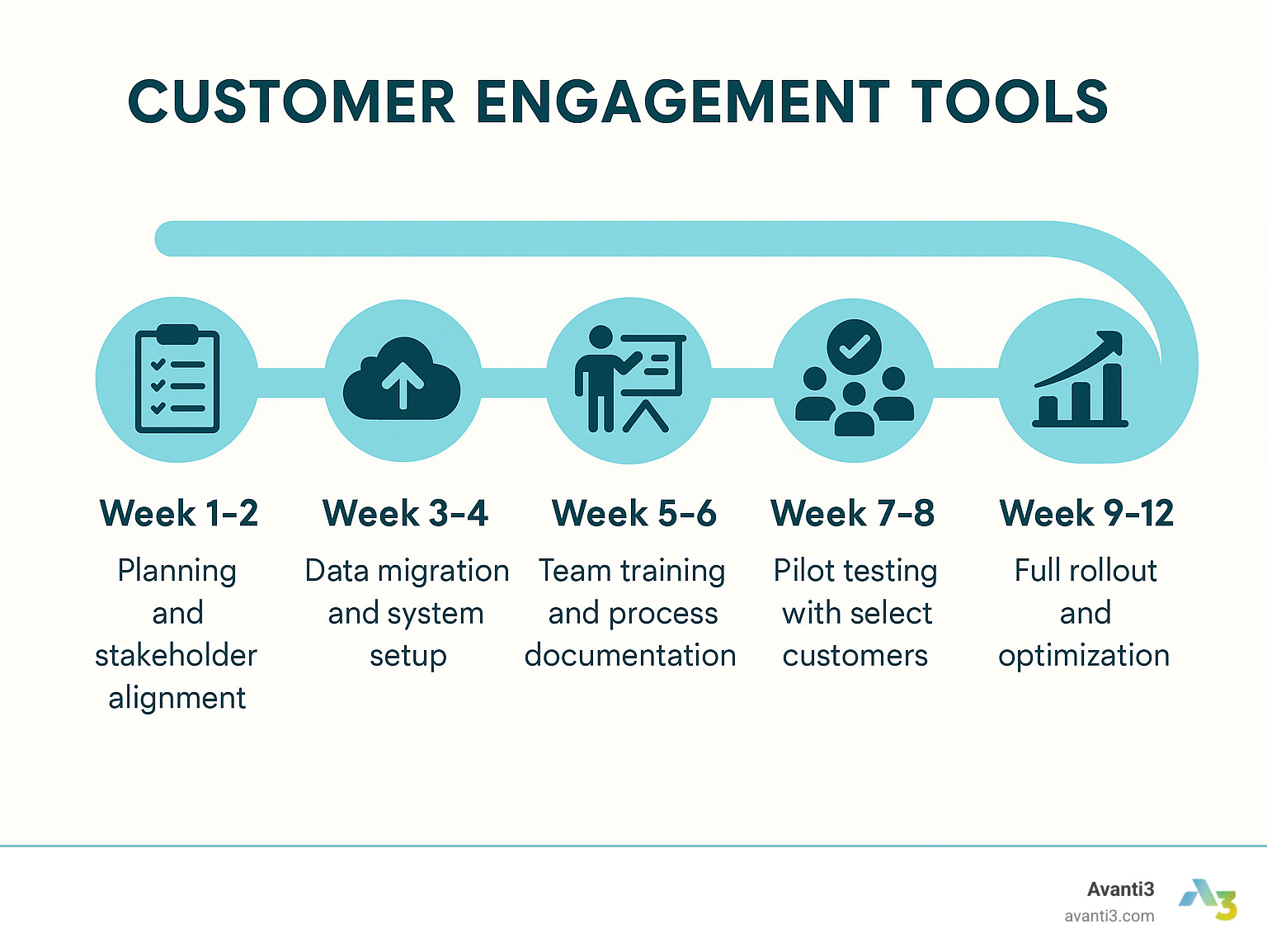
Conclusion
The customer engagement landscape is changing rapidly, and customer engagement tools have become essential infrastructure for every successful business relationship. These platforms aren’t nice-to-have features anymore – they’re survival tools in today’s competitive marketplace.
The numbers are clear. Companies with strong omnichannel engagement keep 89% of their customers, while those without lose two-thirds of their customer base. That’s the gap between thriving and barely surviving.
Web3 technologies are opening unprecedented doors. Imagine customers actually owning loyalty rewards as NFTs that grow in value. Picture transparent blockchain systems letting customers see exactly how you use their data. Think about AR experiences letting people try products in their living rooms.
These aren’t distant fantasies – they’re happening now. The brands embracing them first will build the strongest customer relationships of the next decade.
At Avanti3, we’re making cutting-edge technologies accessible to businesses of all sizes. Our platform seamlessly blends NFT memberships, blockchain transparency, and AI personalization into experiences that feel magical to customers but simple to manage for businesses.
The opportunity window is wide open, but it won’t stay that way forever. The brands investing in comprehensive customer engagement tools today are laying groundwork for market dominance tomorrow.
Your customers are ready for these next-level experiences. The question is: are you ready to give them what they’re looking for?

